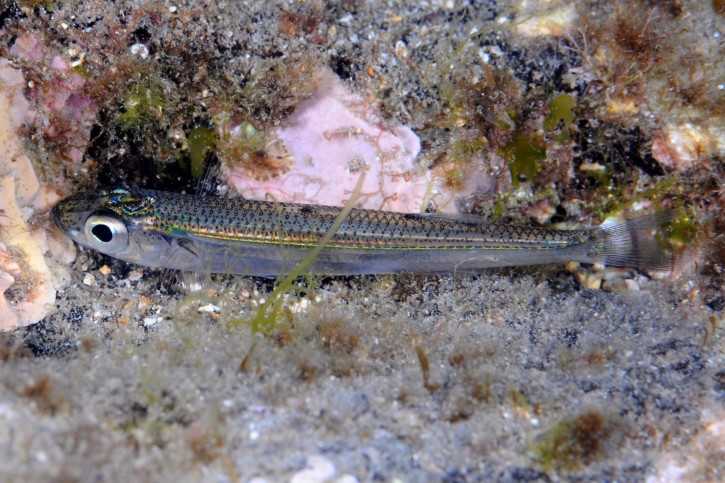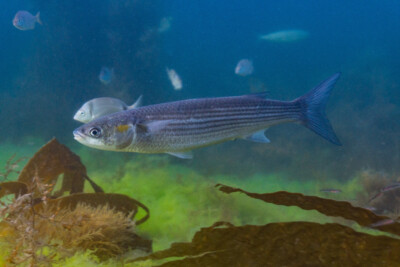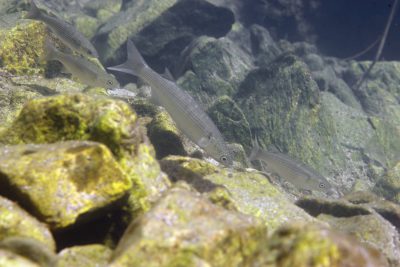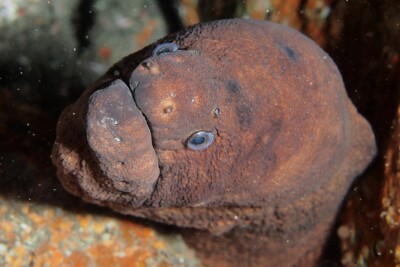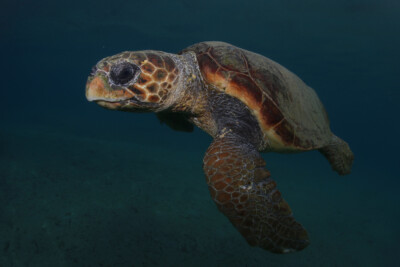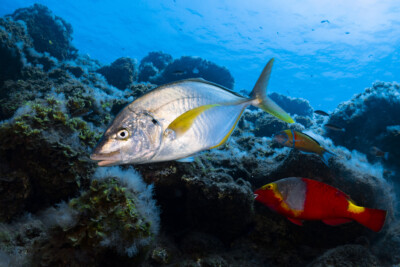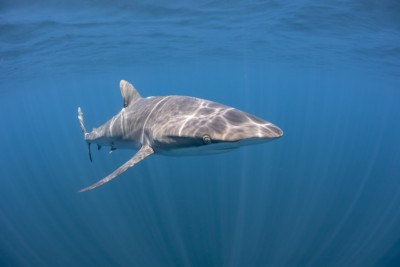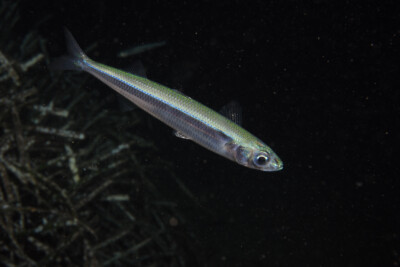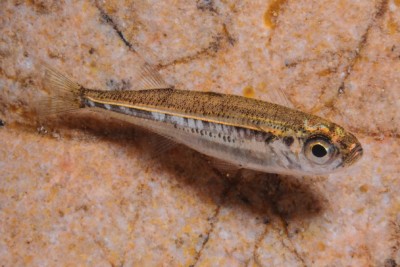sand smelt
| Scientific name | Atherina presbyter |
|---|---|
| Descriptor | Cuvier |
| Year of description | 1829 |
| IUCN category (World) | LC |
| Family | Atherinidae |
| Genus | Atherina |
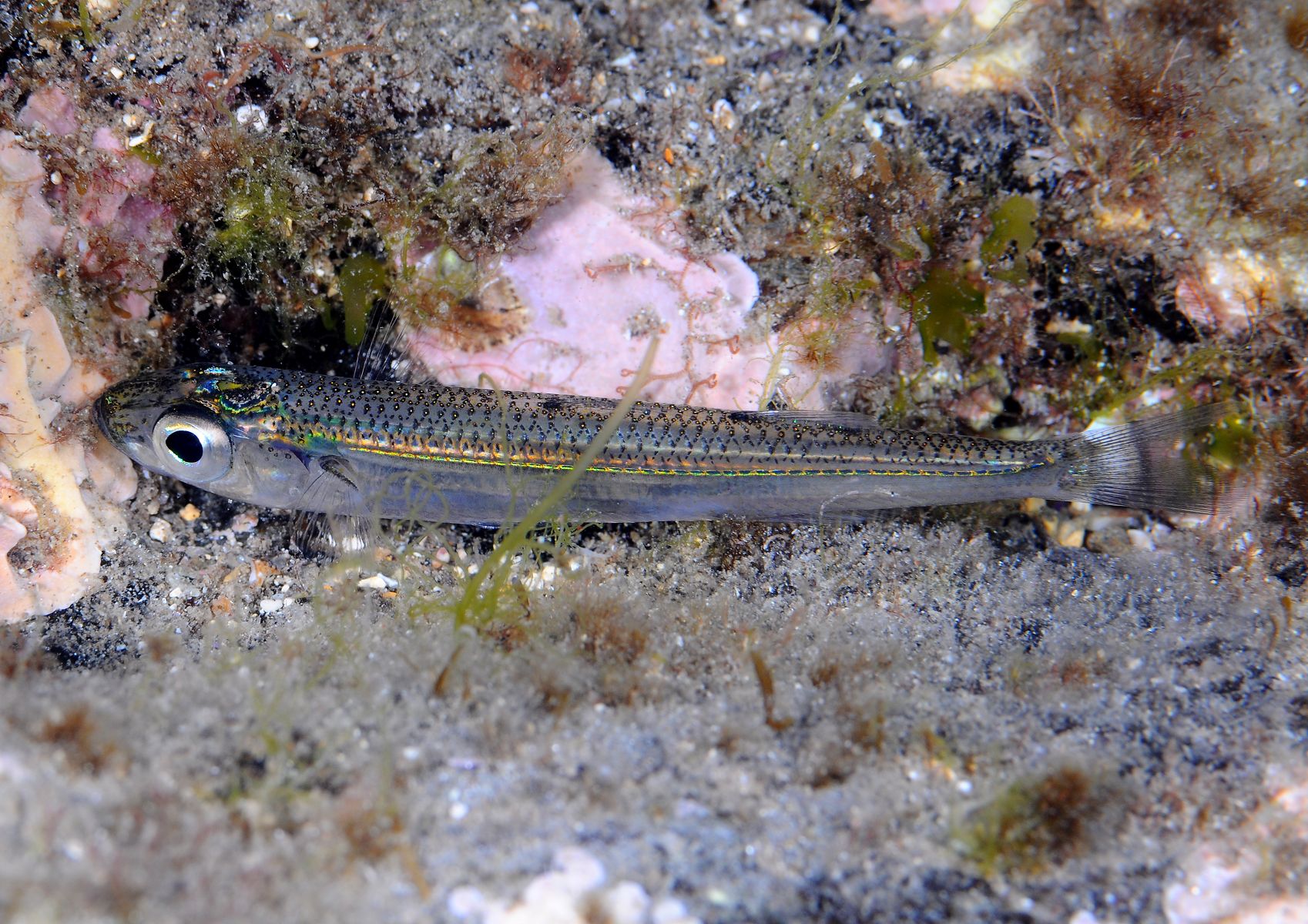

Introduction
Atherina presbyter is a fish found in cold and temperate seawater from the North Sea to the Mediterranean Sea and along the Saharan coasts of Africa.
Who is it?
Morphology
-
Average size18 cm
-
Maximum size20 cm
-
Longevity4 year
-
Average size18 cm
-
Maximum size20 cm
-
Longevity4 year
How to recognize This fish ?
Atherina presbyter is a fusiform fish, with a nearly transparent body that is silvery-gray in color with blue-green to yellow reflections. The transparency allows for the discernment of the lateral line scales.
The fins are translucent. The pelvic fins are located above the pectoral fins.
Sexual dimorphism
There is no apparent dimorphism in this species.
Behaviour & Life cycle
-
dietcarnivorous
-
Male sociabilityliving in shoals
-
Female sociabilityliving in shoals
-
territorialNo
-
Way of livingdiurnal
The Atherina presbyter is a lively fish that lives in large shoals near the surface, close to the shore. At night, it moves closer to the bottom in search of planktonic prey.
This species undergoes seasonal migrations in the Atlantic.
Reproduction
-
Reproductionovipare
The Atherina presbyter is an oviparous fish that spawns in open water from spring to late summer. The eggs attach to surfaces (algae, rocks, etc.) and develop until hatching. The 7-millimeter larvae are part of the plankton.
This species has rapid growth, with size increasing significantly in the first year.
Harmless species
This species presents no particular danger to humans in case of encounter in its natural environment.
Origin and distribution
Geographic distribution & Conservation
This species, being observed in very large shoals, is not currently threatened.
Atherina presbyter is mainly artisanally caught with seine nets.
The main threat is water warming. This warming forces the species to migrate further north for survival. The Mediterranean sand smelt population could then disappear.
Conservation status of populations (IUCN)
What is its habitat?
Natural environment characteristics
-
Temperature8 - 26 °C
-
Depth0 - 50 m
Biotope presentation
This species migrates vertically in the water column on a daily basis. During the day, the fish swim near the surface, while at night they descend close to the bottom, up to 50 meters.
Species of the same biotope
To go further
Sources & Contributions
Participation & Validation
The Fishipedia team and specialist contributors are committed to providing high-quality content. However, although the information comes from scientific sources or testimonials from specialists, the cards may contain inaccuracies.

Adrien Falzon

Nans Gourgousse
Translation
Translation done with the valuable contribution of our translators, who make this information available to a wider audience. We sincerely thank them for their commitment.
Bibliographic references
The Early Life History of The Sand Smelt (Atherina Presbyter) - A. W. H. Turnpenny - R. N. Bamber - Cambridge University Press - 2009.
Reproductive biology of the sand smelt Atherina presbyter Cuvier, 1829 (Pisces: Atherinidae) in the central-east Atlantic - Teresa Moreno - José Juan Castro - Juan Socorro - Elsevier Ltd - 2005.
Scientific partners
Tags
Species of the same family
Same genus
Species of the same biotope
